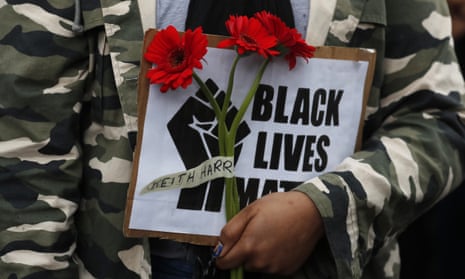Covid-19 has transformed the United States. It has forced the nation to confront an ugly truth about American life: racism kills. The pandemic’s path of destruction in New York City, for example, is heaviest in neighborhoods that were already reeling from the impacts of obesity, diabetes, cardiovascular disease and HIV/Aids. These are also the neighborhoods with the highest concentrations of working poor and low-income Black and Latinx families. These are also the neighborhoods with the highest concentrations of unemployment, low levels of education, and high rates of arrest and incarceration.
These are the neighborhoods that housed the heaviest concentrations of workers who were deemed “essential” by city and state government decree and who were at greatest risk for exposure to Covid-19 because their jobs required them to be in close contact with the general public. Tragically, bus drivers, subway workers and delivery personnel do not have the option of “working from home”. They typically have had to choose between remaining home and losing their jobs or working in settings with a high risk of exposure to the virus. Moreover, in many instances, those whose jobs did not carry health insurance delayed or avoided going to the hospital for fear that the cost of getting medical care would bankrupt them.
The global pandemic was by no means the first public health crisis to expose race/ethnic health disparities, the term used to describe substantial differences in rates of morbidity and mortality between people of color and whites in the United States. HIV/Aids, the viral pandemic that was first observed by public health officials in the 1980s, remains a disease that is significantly more prevalent among Blacks in the US than whites. As noted by the Kaiser Family Foundation: “Although they represent only 12% of the US population, Blacks account for a much larger share of HIV diagnoses (43%), people estimated to be living with HIV disease (42%), and deaths among people with HIV (44%) than any other racial/ethnic group in the US”
With higher rates of diabetes, cardiovascular disease, obesity and hypertension, Blacks in the US have significantly lower life expectancy than whites. Public health researchers have long insisted that these disparities are not the result of biological differences between members of different race/ethnic groups. There is little to no evidence to support the notion that differences in genetics account for these conditions.
Geography plays a pivotal role. When neighborhoods have lower access to educational opportunities, healthcare, affordable housing or are characterized by “food deserts” – that is, neighborhoods with limited or no access to the ingredients for a healthy diet – residents will invariably lack access to the factors that contribute substantially and meaningfully to good health.
Public health professionals who study health disparities have long argued that the remedy for such disparities is not access to healthcare alone, although such access is important. The Centers for Disease Control and Prevention (CDC) has recommended that improvements in housing, education and employment opportunities would have dramatic impacts on such disparities. But while these recommendations are universally acknowledged to be significant steps toward solutions, the political will to finance such improvements has been lacking.
Yet the political winds seem to have shifted, at least partly. The Minneapolis police’s killing of George Floyd, and the mass protests and understandable outrage that have followed, have led to new interest in policy ideas that until recently would have been dismissed as too radical. Many activists are calling to “defund the police” and use much of the funds normally allotted to policing – in most US cities the police receive the lion’s share of municipal budgets – to instead finance community improvements.
Most of these activists do not necessarily want to eliminate the police altogether. But they are asking us to reorient our thinking and recognize that many of the problems which police in urban areas are tasked with confronting are the result of social inequities. If homelessness, extreme poverty and untreated mental illness give rise to antisocial behavior, it is the police who are called to manage the problem. Defunding the police has a simple logic: rather than finance the police to control the homeless, for example, use those dollars to improve housing and work to eliminate homelessness altogether. Rather than financing the police to control the behavior of those suffering from mental illness, finance efforts to treat mental illness.
The twin crises of Covid-19 and police misconduct have exposed the tragic consequences of racism in the United States. As we rebuild and reconstruct the nation after this pandemic and its economic consequences, we must use this moment as an opportunity to repair some of the damage created 401 years ago when the first Africans to land on the shores of the Jamestown colony in Virginia were enslaved.
As a defense against the death and destruction of future viral pandemics, investing in the building of healthy communities in the neighborhoods that experienced substantial Covid-19-related morbidity and mortality would not only improve the health and safety of neighborhood residents, it would substantially reduce the reservoir of infectious disease that threatens the health of all. Even the rich and powerful were not totally spared the ravages of this pandemic. For the first time in memory, the logic of eliminating the health consequences of the nation’s racist past can be understood as moving to improve the health of everyone.
Robert E Fullilove, EdD, is a professor of sociomedical sciences and associate dean for community and minority affairs at the Mailman School of Public Health, Columbia University
